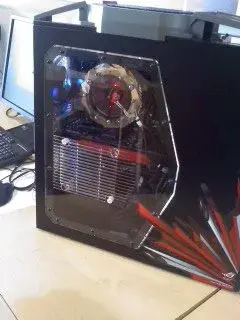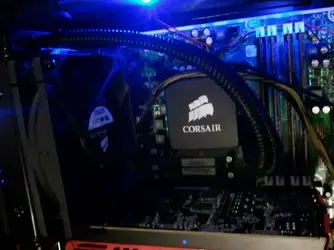This is wrong. It really can matter quite a lot regardless of any settings that may be available in your camera and how you use them.
However, before providing a clear example of why this is wrong I want to stress another point. I noticed that Scott posted in this thread and I know he shoots camera JPEGs. I would do the same if I were in his business. There are many appropriate reasons to make the best possible JPEG and I can't think of a more appropriate one than shooting sports journalism when you're working under deadlines so extreme that some photos get web published before the event is over -- not a lot of time there for raw processing. Take a look at the photos on Scott's website and be properly humbled about your own skill using a camera.
I just bought a camera that is wi-fi capable so that I can take a photo and upload it directly from the camera before taking a step away from where I was standing; that's if I upload the JPEG, not the raw file. We have all seen how this capability in cell phone cameras has literally changed our world. Nobody's going to be uploading raw files anytime soon.
With the above said; there are circumstances where a raw file skillfully processed is the only way to get the shot and that no matter what you set on the camera JPEG engine that software will crash and burn and leave you with nothing but cr*p that you won't be able to salvage by editing. Camera JPEG engines work reasonably well when they're not stressed by challenging lighting conditions. Even so, they are engineered to produce mediocrity as their target -- that what the word automatic means.
An example: Over Spring Break I took a short drive down to Big Oak Tree State Park and I took this photo:

That scene has just begun to become backlit. Backlighting is challenging lighting. You can use ADL on your Nikon or HTP on your Canon or any combination of camera contrast, backlight and exposure settings till your blue in the face and no camera JPEG engine will give you the photo I produced from the raw file. AND no matter what you do you will not be able to salvage the camera JPEG in editing to produce the photo I got from the raw file. This is a backlit landscape. If I'm shooting camera JPEGs I should have fixed the lighting right? Yeah right. I should have come back after the sky went fully overcast an hour latter? I should have waited until it wasn't backlit or arranged to take the photo a couple months later when the sun wouldn't be so far into the southern sky? Yeah right. I don't have to be limited by the restrictive capabilities of my camera's rather crude processing software.
I wanted the backlight and I knew how to handle it with a raw capture and post processing. Most critically I didn't want an exposure that would clip the highlights in the clouds and I wanted as much color in that hazy sky as I could get. I took the photo with a -1 exp. comp. Here's that camera JPEG unedited:
There's nothing that you could set on the camera that would have coaxed it to take my version of this photo. The shadows in the JPEG are blocked up and you can't recover them now in editing. Of course the shadows are blocked up, I set a -1 exp. comp. what do you expect. But if I hadn't set that -1 exp. comp. the camera would have clipped the highlights -- this is a case of pick your favorite mistake. And you can't edit the JPEG now to salvage the photo. The data isn't there any more. If you don't believe that here's a higher-res version of the JPEG; go ahead and try:
http://fc08.deviantart.net/fs71/f/2013/087/3/7/untitled_by_skoparon-d5zk2rj.jpg
If you shoot JPEGs you can get some good photos and they can be tweaked within rather constrictive limits to be made better. Photographer's who can do that and do it well -- Scott for example -- have a very respectable (and profitable) skill. It is a different skill than mine. Different is good. What we need to do is recognize when and why different is good and put things appropriately in their place. You can't tell me it doesn't matter that I shoot raw and that if I set the camera right I can get the same result shooting JPEG -- that's total nonsense. It's likewise nonsense to tell Scott the next time he photographs a sporting event where he's expected to deliver results 30 minutes after the event ends that he should be taking all his photos in raw.
Joe













![[No title]](/data/xfmg/thumbnail/41/41797-ed370d68dae70f5b0a7252ec2d525912.jpg?1734176109)







